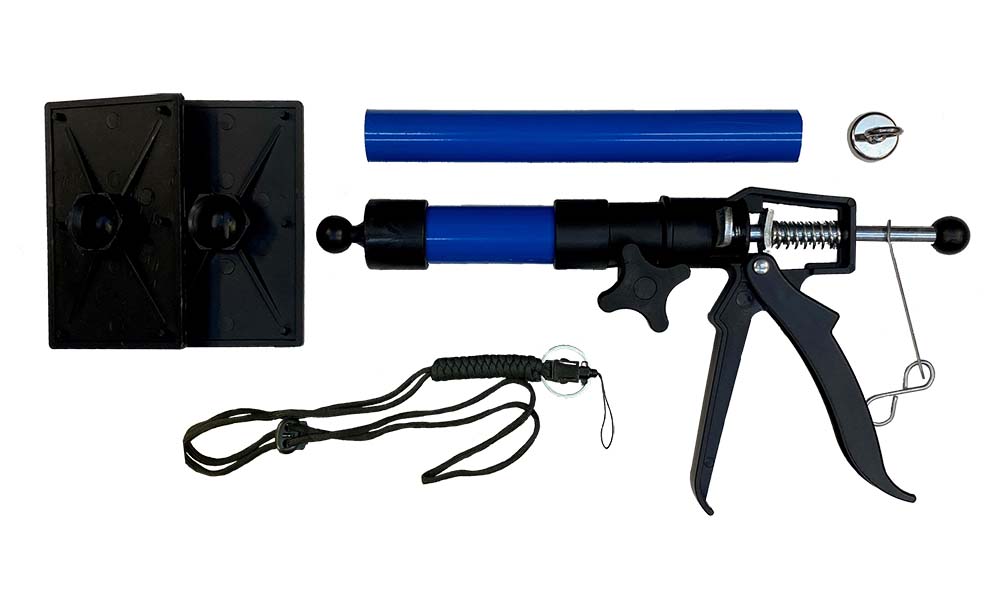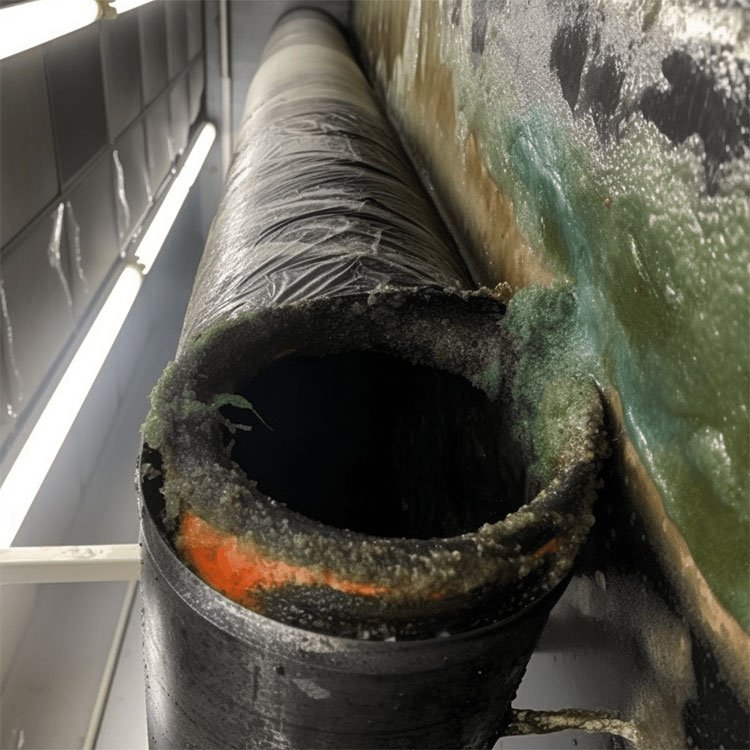Indoor Air Quality Statistics 2024

Air quality has never been a more important subject. We are now breathing in pollution from a range of different sources, and it is impacting on our health in the most serious ways, as the tragic death of nine-year-old Ella Kissi-Debrah has shown.
Since the COVID-19 pandemic, we are all more aware of what can be carried in the air for us to breathe in, and it is affecting those with respiratory conditions and those without. Whilst much of the focus for air quality has been centred around the air outdoors, it is now becoming increasingly important to monitor indoor air quality too.
Some of the latest statistics seem to suggest that not only is air quality getting worse in many areas, but the air indoors could also even be worse than what we are breathing outside.
Explore our blog
Indoor Air Quality Statistics Overview
- Indoor air pollution contributes to 4% of global deaths. (Our World in Data)
- In 2016 around 40,000 deaths in the UK were as a result of outdoor air pollution. (RCP London)
- In 2022, indoor air quality in the UK was poorer than that of outdoor air for 11 out of 12 months. (Dyson)
- Over 97% of homes exceed WHO limits for at least one of three major pollutants. (The Guardian)
It is believed that we spend in the region of 80-90% of our time indoors, and so it stands to reason that we need to pay more attention to the air that we breathe while we are there. This doesn’t just mean at home, but also in schools, workplaces and public places such as restaurants, gyms and even public transport.
As we all spend good proportions of our time indoors, we are all vulnerable to the pollution of indoor air, although the extent of this can vary greatly. Compared with the outdoor environment, indoor air quality is complex as the sources and concentrations of pollutants can vary from one building to another.
There will not only be internal sources of pollutants and air chemical reactions but also infiltrations of outdoor air to contend with. If ventilation in a room or building is poor, then the concentration of pollutants can be extremely high.
Health and Environmental Impact
Poor indoor air quality can take a massive toll on our health given the amount of time that we spend breathing it in, and it can affect a wide range of different aspects. It has potentially fatal consequences, and in 2016 it was estimated that around 40,000 deaths could be attributed to outdoor air pollution in the UK every year.
The number of deaths attributed to poor indoor air quality is much harder to measure, but the World Health Organisation (WHO) claims that household air pollution was responsible for approximately 3.2 million deaths per year in 2020, with 237,000 of these being children under the age of 5.
The WHO has issued mean guidelines for safe fine particulate matter levels; however, it is believed that as much as 79% of the UK exceeds these levels.
Indoor air quality is not just limited to the home, and certain working environments can take a lot of responsibility for the death and illness that is suffered thanks to issues such as poor ventilation and high concentrations of dust and pollutants. This can also create an increased risk of heart disease, stroke, some cancers, dementia and cognitive decline, impaired lung growth and some other respiratory illnesses.
There are a number of common symptoms to look out for that can indicate that an individual is subject to persistent poor indoor air quality, such as asthma, allergic rhinitis, coughing, wheezing and cognitive impairment.
Analysis of Pollution Sources
Air quality can vary across the country, with some cities showing quite poor results:
- Hackney in London is believed to be the most polluted area in the UK, with an Air Quality Index (AQI) of 50.
- Middlesborough was ranked second with an AQI of 29.
- Motherwell in Scotland was third with an AQI of 27.
- Cardiff, Glasgow and London all had AQI’s of 25.
- Leicester and York have an AQI of 23.
- Reading has an AQI of 22.
- Aberdeen’s AQI was 20.
- The cleanest city in 2022 was Midlothian with an AQI of 16.
(Ref: https://www.iqair.com/gb/uk)
In order to tackle the subject of indoor air quality, it is important to understand where the pollution comes from in the first place. Some of the most common sources of indoor air pollution come from smoking, cooking, heating appliances and fumes from paint or furniture. In workplaces there can be a build up of dust or chemical fumes depending on the work that takes place, and even office equipment such as laser printers can be responsible for pollution.
Currently, UK air quality legislation is a combination of international commitments, retained EU law and domestic legislation. In February 2022, the Air Quality Common Framework was published to show how the UK governments were working together to develop air quality policies.
Indoor vs. Outdoor Pollution
Indoor and outdoor pollution can be very different. Many homes and workplaces are now heavily insulated, with double glazed windows and are fully sealed in order to be energy efficient.
However, whilst this makes it difficult for outside air to get in, the lack of ventilation makes it possible for high concentrations to build up, meaning that indoor air quality can be worse than what we breathe outside in some places.
There are a number of factors that could affect this, including whether you live in a high traffic area, whether you have a gas cooker in your home and whether you are in an indoor space with an air filtration system.
Some air pollutants can be found both indoors and outdoors, but their sources and composition can vary. Particulate matter is the microscopic particles originating from human-made and natural sources such as solid fuel burners, cookers and gas boilers and through chemical reactions between air pollutants.
There can also be volatile organic compounds (VOC), bioaerosols, persistent organic pollutants (POPs), ozone, nitrogen oxides, carbon monoxide, carbon dioxide, sulphur dioxide and radon.
How to Improve Indoor Air Quality
With such a problem on our hands, it is important to be aware of our indoor air quality through a process of testing and measuring. There are a number of meters available to measure things such as VOCs, carbon monoxide, nitrogen oxide and other pollutants to help keep an eye on your levels. There are also indoor air quality testing kits, dust monitors and even swab tests to sample mould and bacteria.
Once you have identified your pollutant levels, you can then take steps to tackle them. The main thing to look at is the ventilation in your building. Do you need to install a ventilation system? Does your existing ventilation system require more maintenance to keep your air quality at optimum levels? If you’re responsible for air quality in a manufacturing environment, is your Local Exhaust Ventilation (LEV) system adequate? Would additional maintenance or an improved LEV system improve indoor air quality to optimum levels?.
It should also be necessary to look at whether anything can be done to reduce the original source of the pollution, particularly in the workplace. In areas with a particular problem, it may be necessary to provide Personal Protective Equipment such as masks to help reduce any health risks, although this is a remedy of last resort as the law requires any polluting health risk to be controlled at source by local exhaust ventilation for example
Looking Forward
Air quality is likely to be a big topic for the government in the next few years, and we are therefore likely to see more legislation coming into effect.
Clean Air Zones and Ultra Clean Air Zones have been implemented to reduce outdoor air pollution, which will then impact on what filters indoors in those areas. The European Commission is set to review their Ambient Air Quality Directive and each devolved nation now has its own individual office for environmental standards who will oversee air quality amongst other things.
The government now believes that poor air quality is the largest environmental risk to public health in the UK, and with these statistics, it is easy to see why. The number of deaths and associated health conditions are testament to the fact that the air we breathe could be doing us harm every single day and so it is important to take the matter seriously and tackle it while we still can.
By putting proper monitoring and ventilation in place it is possible to keep air quality standards high and make sure that the air we breathe is cleaner and healthier. Here at IAQ Services, we can provide a range of services to ensure that your indoor air quality is up to standard, providing LEV testing, ventilation hygiene and much more. To find out more, contact IAQ Consultancy Services on 0330 133 152 or email info@iaqservices.co.uk.
Do Houseplants Purify Indoor Air and Improve Air Quality?

A NASA scientist, Dr Bill Wolverton, first claimed that houseplants improved indoor air quality in 1989 when results of his experiments were published. However, since then his claim has been refuted by Professor Michael Waring.
What’s the truth? Due to customer enquiries, IAQ’s research asked: Do houseplants purify indoor air and, in so doing, improve air quality? Firstly, here’s an outline of the experiments undertaken by Dr Wolverton:
Wolverton’s Houseplant Experiments - Methodology
Wolverton, a senior research scientist, was working for NASA at the Stennis Space Centre, when he conducted the experiments. Plexiglass chambers were constructed and various indoor house plants placed inside them. Wolverton then introduced chemicals and “scientifically” measured how effective each plant was at absorbing the harmful substances and removing them from the air surrounding them.
Here are some of Wolverton’s findings but please keep in mind, and read on, to see that these were refuted.
Spider Plants and Formaldehyde
Wolverton’s experiments discovered that Spider Plants (Latin Chlorophytum comosum), Philodendrons and Golden Pothos (commonly known as Devil’s Ivy) removed formaldehyde from air. Formaldehyde is found in everyday household products (such as washing up liquid, fabric softeners and cosmetics and in building and paper products). In small amounts formaldehyde is known to cause eye, nose and throat irritation. In large amounts formaldehyde causes skin rashes and lung problems.
Daisies and Benzene
Wolverton also discovered that Gerbera Daisies and Chrysanthemums were “most effective” at removing Benzene from the air. Benzene, a major component of petrol, is also found in detergents, plastics, solvents and cigarette smoke. On Benzene the UK government states that:
“Short term exposure to benzene in air may cause irritation to the eyes nose and throat, cough, a hoarse voice and breathing difficulties. Exposure to larger amounts can cause swelling of the airways and a build-up of fluid in the lungs. Ingestion of benzene may cause a burning feeling throughout the digestive tract, nausea, vomiting and pain.
Following exposure by inhalation or ingestion benzene may cause neurological effects, problems with the heart and lungs, coma and convulsions. Benzene may cause redness and swelling if in contact with skin. It may cause a burning and irritation to the eyes…” CLICK HERE TO READ MORE.
Peace Lilies and Formaldehyde, Benzene, Ethylene Oxide and Ammonia
According to Wolverton, and many writers who have since based their articles uncritically on his experiments, the Peace Lily is at the apex of plants that remove from indoor air. For instance, I found this reference based on Dr Wolverton’s works:
“This amazing natural air purifier [the Peace Lily] doesn't just add oxygen to your home; it filters and removes toxins including benzene, formaldehyde, ethylene, and ammonia!”
It would be a reason to stuff your house full of Peace Lilies as, according to Wolverton (but later refuted), they combat not only the detrimental effects of formaldehyde and benzene (as outlined above) but also ethylene and ammonia. Below is an outline of the effects of the latter two which show why these substances too need to be removed from indoor air:
Ethylene Oxide
Ethylene Oxide (according to UK government) “is used as a chemical intermediate in the production of various products including antifreeze, detergents, fibres and bottles”. “Inhalation of Ethylene Oxide” according to the same UK government article “can cause irritation of the eyes and nose, coughing, burning sensation in the mouth and breathlessness.
In severe cases lung damage can occur. Ethylene oxide can be absorbed into the body via inhalation or skin contact causing headache, stomach upset, fitting, coma and heart problems.” Read more from source here.
Ammonia
Ammonia is used in some cleaning products and fertilisers and in the production plastics, synthetic fibres, dyes, explosives and pharmaceuticals. Exposure to Ammonia, according to The National Institute of Occupational Safety and Health, can be fatal! Read more here.
Houseplants and Air Purification the Unfortunate Truth from Professor Michael Waring
The truth about houseplants and how much we can depend on them for purifying our indoor air quality was outed by the eminent Professor Michael Waring. In an interview with The Atlantic in 2019, Waring put it bluntly:
“You would have to put 1,000 plants in an office [10’ x 10’ x 8’] to have the same air cleaning capacity of just changing over the air once per hour, which is the typical air-exchange rate in an office ventilation system”.
Click here to read the full article in The Atlantic
Conclusions
Perhaps Dr Bill overstated the effectiveness of a few houseplants in cleaning and purifying the air we breathe in homes and workplaces. Maybe he allowed the myth which grew out of his 1980s experiments to be perpetuated for some other reason.
Was it a coincidence that, almost twenty years later he published a book entitled Grow Fresh Air: 50 Houseplants that Purify Your Home or Office? Wolverton’s book, published in 1996, is still available in paperback from Waterstones for £8.99.
True, in controlled environments (such as plexiglass sealed compartments) plants did “take substances out of the air through tiny openings in their leaves” and that “roots and soil bacteria are all important in removing trace levels of toxic vapour” that's why we need forests and to stop destroying them.
However, the fact is that a small terrace house would need approximately 15,000 plants to clean and purify its air and there would be no room to move. Also, if plants were the answer to improving Indoor Air Quality, you’d be able to buy them from experts in the Indoor Air Quality sector such as IAQ Services Ltd. Instead, IAQ Services provides Ventilation Hygiene services.
BEWARE Substance Discovered in Ductwork is Dangerous
This is an urgent message to all Building, Facilities, Operations and Site Managers from IAQ Services.
While demonstrating our Damper Reset Tool at a prestigious London HQ building, our senior operative, Stephen MacQueen, detected a “strange substance”. Upon further investigations, in this and adjoining buildings, some of which would fail HSE compliance standards, MacQueen discovered “more of the substance oozing from vents” and found it to be “extremely dangerous”.
MSM are verifying this report but until they publish, please share.
Conditions were not ideal but IAQ's operative, MacQueen, was able to capture the first image of the strange substance. Later he reported back to IAQ that this “extraordinarily smelly” substance is not restricted to poorly maintained buildings. His initial surveys found that sites with excellent maintenance systems and regimes were faring better (as less contamination found) but that the substance was still able to lurk in clean environs “as if it was biding its time” said MacQueen.
As he expected, higher quantities of the dangerous substance was found in poorly maintained buildings where dirt, grease, mould and fire hazard crannies were energising and nurturing it. MacQueen concluded that the substance thrives within grimy ducts and vents.
WARNING Do Not Prod!
Do not apply standard cleaning products to the substance as IAQ's tests show that these fail to combat it and actually appear to nourish it. Whatever you do, DO NOT PROD the substance! Prodding acts as an annoyance to it, causes it to expand exponentially and the concomitant stink it emits defies description and violently assaults any unmasked faces within a 100 metres radius.
In fact, prodding weaponises the substance. Therefore, should you find any of the substance, on sites you are responsible for, and someone accidentally or stupidly prods it, IAQ advice to you is GET THE HELL OUT OF THERE!
IMPORTANT Link to Pictures
Please check your ventilation systems and call IAQ if you find the substance present. We have a patent pending product and method capable of destroying it. The gelatinous, gluey, puce coloured, slimey substance is not difficult to detect, as it is drawn towards humankind and make itself known in an alarming fashion. For your reference, IAQ have captured video footage: PLEASE CLICK THIS LINK to view!
How IAQ’s Fire Damper Reset Tool Helped a Prestigious City of London Company

Resetting Manual Fire Dampers of the Curtain type is fiddly and, as stated in a report published in 2014 by Air Flow Inc of Milwaukee, “incredibly difficult”. Things haven’t changed much but read on to discover how IAQ have made resetting these dampers much easier.
What Air Flow Inc failed to point out in its report was that maintenance staff who are 1) likely to swear and curse when confronted with something fiddly and difficult and 2) are endowed with chubby fingers, should not be given the task. At least they shouldn’t be when a building is occupied and definitely not (as the example below shows clearly) while an important meeting is taking place in the building’s Board Room.
When asked about the incident at a prestigious City of London headquarters’ site, IAQ’s Director of Business Development, Brendan Day, said:
“…never underestimate the acoustic amplification and broadcast abilities of ductwork systems”.
It was during a Board Room meeting here that, according to an anonymous source “a presentation was interrupted by language most foul”. Our source went on to quote the words that were broadcast through a ventilation grill in the Board Room, “as though it were a Hi-Fi speaker”. The words were clearly heard and “drowned out those of the person giving a most important presentation”. For obvious reasons, I do not have the permission of the organisation or of IAQ to publish the words here.
I asked Brendan if there was anything that can be done to overcome the problem of amplification in ductwork systems. He said that unfortunately there was not and, the better maintained and cleaner the ductwork/ventilation system is the better the audio quality.
He also pointed out that Dampers must be open at all times, apart from when they slam shut to prevent fires and smoke spreading through buildings, which also facilitates the broadcast of sound through them. Brendan was able to offer a partial solution though, in the form of IAQ’s Fire Damper Reset Tool.
IAQ’s Fire Damper Reset Tool makes the resetting of Curtain Dampers far less fiddly and far less likely to cause the utterance of profanity by maintenance workers with nimble or chubby fingers. You can buy IAQ’s Fire Damper Reset Tools from its website. They cost £95 + VAT and are worth every penny, CLICK HERE TO BUY IAQ’s Damper Reset Tools.

Copyright Katy Coxall © for IAQ Services Limited 20th March 2023
CLICK HERE to watch a video of How to use IAQ’s Fire Damper Reset Tool
CLICK HERE to read Airflow Inc’s The Agony of Fire Damper Testing





